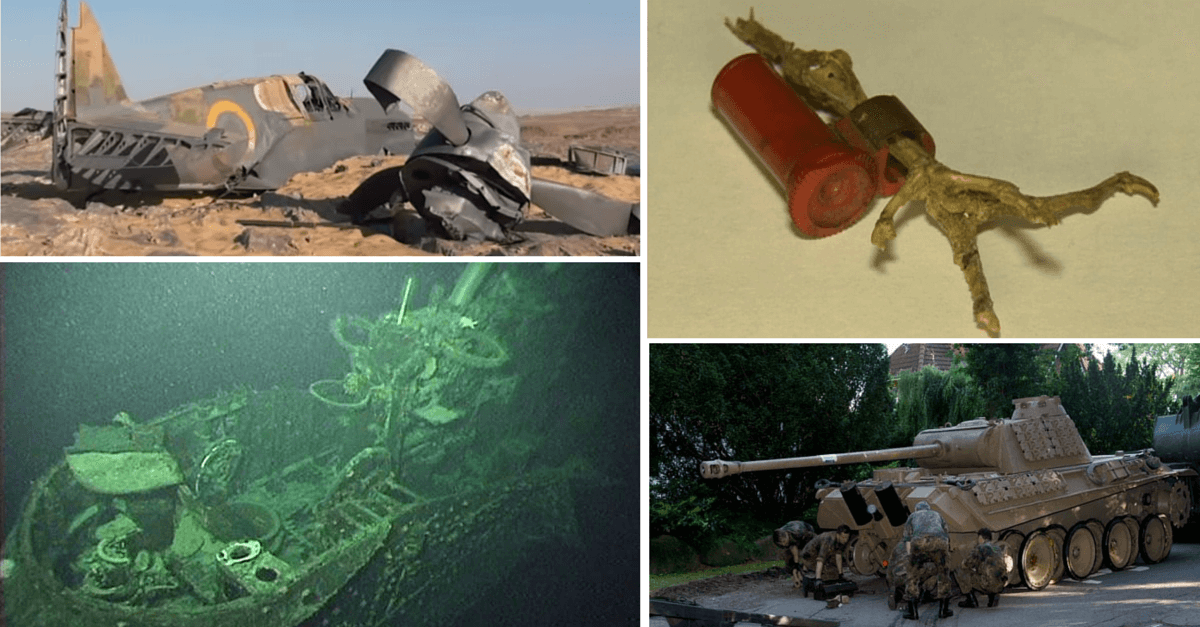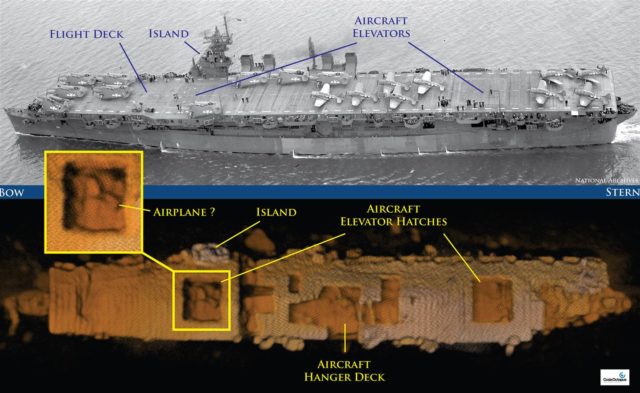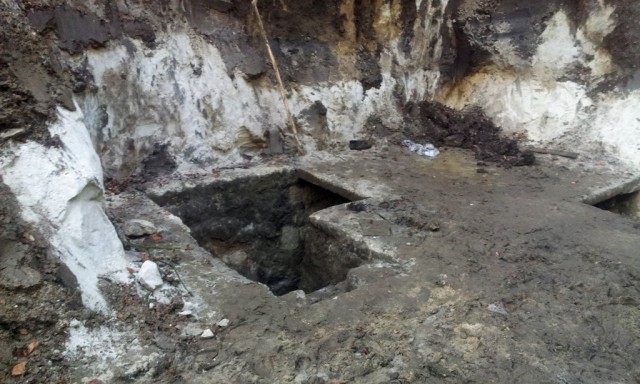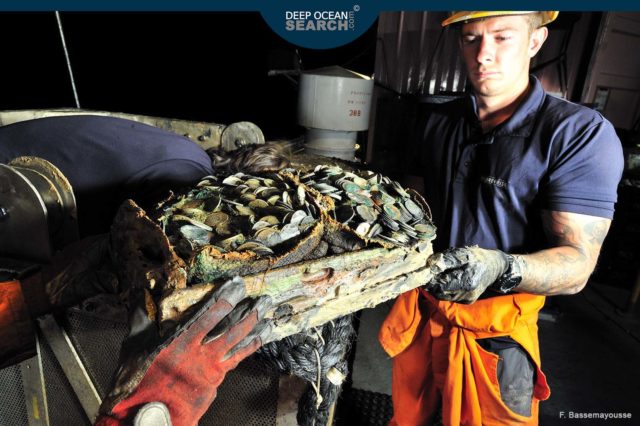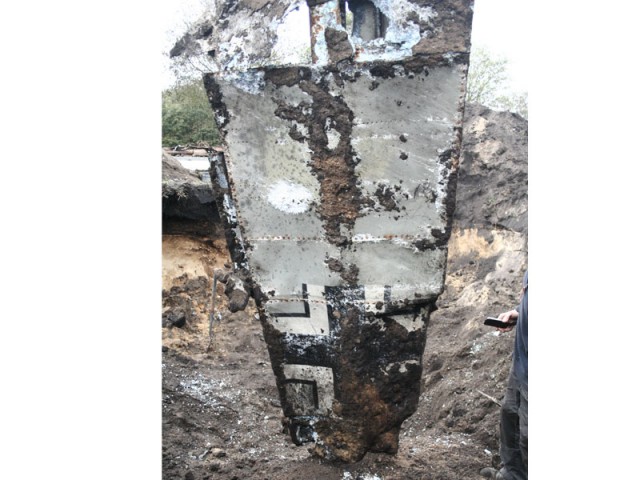Seven decades after World War Two ended, artifacts from this period are still being discovered around the globe. These range from fighter airplanes in the desert to almost complete aircraft carriers and battleships, lost on the ocean floor for decades.
We are going to look at 10 of the most astonishing discoveries that have turned up in the last 10 years.
Japanese WWII battleship HIJMS Musashi
![[Photo Credit: Paul Allen's Website]](https://www.warhistoryonline.com/wp-content/uploads/sites/64/2015/03/The-Musashi-Wreckage.jpg)
In March 2015, almost 70 years after the end of World War Two, the sunken Japanese battleship Musashi has been located in the Sibuyan Sea off the coast of the Philippines. Researchers believe they have located the ship after identifying a type 89 gun turret, which was a feature of the Musashi – one of the biggest battleships ever built.
The Japanese ship was the second of the country’s Yamato-class ships, which were built by the Japanese Imperial Navy and were the heaviest and most powerfully armed ships of World War Two.
The Musashi was sunk in a battle with US forces towards the end of 1944.
P-40 Kittyhawk And Pilot

After more than seven decades, the body of a missing RAF pilot was discovered in the Egyptian desert. In 1942, an RAF pilot was reported missing when he failed to return to his base. He was flying Curtiss Kittyhawk fighter, and it was said that the aircraft crashed in the desert. It was initially believed that Flight Sgt. Copping’s fighter aircraft was shot down by Luftwaffe near the Libya-Egypt border. However, it was later revealed that Copping got lost in a massive sandstorm, and after flying disoriented over featureless desert Sgt. Copping’s plane crashed.
A group of Polish Oil workers discovered Copping’s Curtiss in 2012. They quickly reported to the authorities, who found a partially destroyed aircraft along with a parachute. This meant that Sgt. Copping somehow survived the crash and attempted to make it on foot. They also concluded that Copping was killed by the smoldering heat of the desert and not by the Luftwaffe.
Aircraft Carrier USS Independence
The Independence (CVL 22) was one of 90 ships assigned to Operation Crossroads, the atomic bomb tests conducted at Bikini Atoll in the Marshall Islands. It was scuttled in 1951. Little was known about its use after the tests.
The location of the shipwreck was found last year and researchers began comparing sonar images of the wreck with the declassified documents to determine the vessel had been used as a radiological laboratory and nuclear waste receptacle from 1946 to 1950.
One of the first vessels to be converted to a light aircraft carrier following the attack on Pearl Harbor, the Independence operated in the central and western Pacific from November 1943 through to August 1945. After the war, it was assigned to Operation Crossroads as part of a fleet positioned within about 1700 feet of the “ground zero” blast from the bomb tests carried out to examine the effects of shock waves, heat, and radiation.
Twenty-one ships sunk during the tests, but the Independence survived, although it was heavily damaged when it returned to the U.S. Two precisely placed torpedoes, close to the keel and away from where extra waste was stored, sank the ship in January 1951.
I-400 class Japanese mega-submarine
In 2013 in the waters off the Hawaiian island of Oahu a Japanese mega-submarine was discovered. The I-400 class Japanese mega-sub was the largest submarine of WWII. It had a hangar in which it could carry three Aichi M6A1 Seiran floatplanes.
The I-400 was completed on 30th December 1944. In April 1945, it was prepared for the Panama Canal Strike, a Japanese attack plan to destroy the locks of Panama Canal. But after Okinawa fell, the plan was canceled and the fleet planned to attack 15 U.S. aircraft carriers assembled at Ulithi atoll. However before the Ulithi attack was launched, Japan surrendered on 15th August 1945, following the atomic bombing of Hiroshima on 6th August 1945 and of Nagasaki on 9th August 1945.
The crew of the U.S. destroyer, to which I-400 surrendered, was astounded at the sheer size of the sub. The I-400 was taken to Hawaii by U.S. Navy for further inspection. After examining, U.S. submarine USS Trumpetfish scuttled the Japanese sub in the waters near Oahu in Hawaii with torpedoes on 4th June, 1946, where it lay undiscovered for almost 70 years.
Carrier Pigeon in Chimney
After spending decades in a chimney in Surrey, England, the remains of a  carrier pigeon which was still carrying a coded message was discovered in 2012. The contents of the message, it is thought, could provide new information from the Second World War, if it can ever be decoded.
carrier pigeon which was still carrying a coded message was discovered in 2012. The contents of the message, it is thought, could provide new information from the Second World War, if it can ever be decoded.
Around 250,000 homing pigeons were used by the United Kingdom during the Second World War. 32 pigeons were awarded the Dickin Medal which is the highest possible decoration for valor that can be given to animals. Some of the recipients include the United States Army Pigeon Service’s G.I. Joe and the Irish pigeon Paddy.
Unfortunately the code was never cracked so what the message said will forever remain a mystery.
Nazi ‘Nuclear Weapons’ Complex In Austria
A cave in Austria has caught the attention of historians and all of those interested, after unusually high radiation levels were noticed there, although some experts say it is possible that the concentrations are natural. No matter what they will find in the end, the local authorities want this process to be carried out and the mystery to be solved.
The 45,000-square-metre network of tunnels, were at first used as a secret aircraft production factory. During the last 10 years, a government-owned company has pumped concrete into the tunnels to make them a little safer and now, the same company is drilling them out.
Andreas Sulzer, a documentary film-maker from Austria insisted that the Mauthausen-Gusen is hiding a top secret scientific lab underneath the concentration camp, information which led to the decision to re-open the tunnels and find out whether the Austrian film-maker is right on not. He said that for the last two years he has been working on a film about a scientist named Viktor Schauberger, who he believes was “involved from 1941, under the strictest secrecy, in St Georgen on SS research projects. He warned colleagues in letters that he was involved in ‘atom smashing’.”
Excavation and exploration of this site is still ongoing.
Millions of Silver Coins From Torpedoed ship
A British-led team has salvaged hoard of silver coins worth $44 million dollars from a steamship which was sunk by the Germans from a record depth of 17,000ft.
The SS City of Cairo, belonging to Ellerman Lines and commanded by Captain William Rogerson was a mixed cargo and passenger ship. In late 1942 she went on an unescorted voyage from Bombay, India, to England, via Cape Town, South Africa and Recife, Brazil. On board were 296 persons, of those 136 were passengers and it carried a mixed cargo which included some 100 tons of silver coins & bars belonging to the UK Treasury.
On November 6th, 1942 she was spotted by U-68 and torpedoed at 2030 hrs. The engines were stopped and preparations made to abandon ship, 10 minutes later a second torpedo was fired and the ship was hit agian and she sank a few minutes later.
DOS, the salvage company, decided to look for the wreck of the SS City of Cairo and started operations in November 2011. This was to be a difficult search as the water depth would exceed 17,000 feet and the weather, currents and swell were known to be a massive challenge. On top of that, the presumed site was around 1000 miles from the nearest land and in the foothills of the mid-Atlantic ridge.
In September 2009 the salvage was completed but DOS was forced by the Ministry of Transport to keep it secret until December 2014.
Panther Tank in Basement Garage
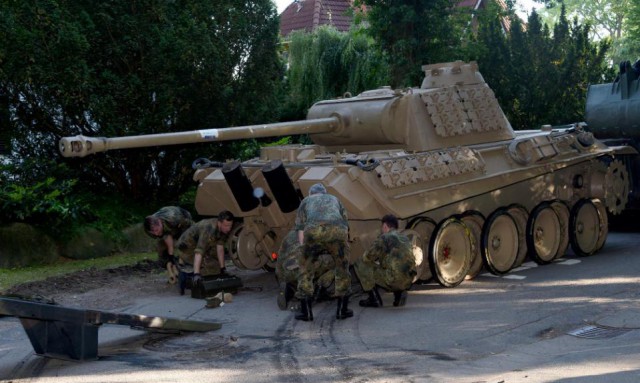
In June 2015, when a Kiel prosecutor suspected the existence of war relics in a villa in the town of Heikendrof, the only way to find out was to authorize a police raid. Possession of war relics or weaponry is banned in Germany and is a prosecutable offense. The raiding party and prosecutors were in awe to find a fully intact panther tank in an underground garage as well as a number of other weapons from the Nazi era.
The villa is owned by a 70-year-old man with an interest in war relics. Local people regard him as a quiet and conservative citizen. Authorities have long suspected the presence of suspicious items under his possession, especially after the reports that the owner of the villa was seen driving his WW2 tank in 1978.
The tank is now in the procession of the German Federal Police.
ME 262 Jet Fighter In Bomb Crater
In October of 2014, members of the Museum Deelen Airbase near Arnhem found a Messerschmitt 262 in a farm field near Deelen airbase, Arnhem, in the Netherlands. This 262 was shot down on the 12th of September 1944 near the village Elden. The pilot, Unteroffizier Schauder, was killed. The Germans took the wreckage to Deelen, then dumped the plane in a bomb crater to hide it.
2006: Graf Zeppelin
The German navy built only one aircraft carrier for WW2. She was launched in 1938 and by May 1941 Grand Admiral Raeder informed Hitler that the Graf Zeppelin, being 85 percent complete at that time, would finally be finished the following year. In reality, by 1943 a 95% complete Graf Zeppelin was abandoned due to lack of interest in the project from Hitler.
When World War Two ended in 1945, on April 25 to be exact, the aircraft carrier was scuttled in the shallow waters of Stettin in Poland. This step was done to make sure that Graf Zeppelin would not end up in Russia’s hands.
However, the Russians refloated her on March of 1946 and she was towed from Poland to Leningrad with the intention to repair her. When this didn’t happen and after some time, the German aircraft carrier was towed back to the Polish coast.
1947 saw the Graf Zeppelin becoming a practice target for Soviet warplanes and Naval ships. 24 bombs and projectiles later, she was still afloat. Eventually, two torpedoes finished her off and sent her down her watery grave.
For many years, nobody knew the actual sinking position of the aircraft carrier. It wasn’t until almost six decades later – in 2006 – that her wreckage was discovered underwater by Petrobaltic.
The Polish Oil Company ship found a wreck just close to the port of Leba which was about 265 meters in length. Further investigations by the the Polish Navy survey ship ORP Arctowski on July 27 that same year confirmed the find — it was, indeed, the Graf Zeppelin. She was sitting 264 feet below the water surface.
